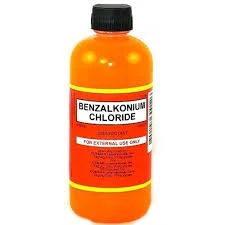Applications of Poly Aluminium Chloride in Water Treatment Processes and Benefits
Poly Aluminium Chloride A Versatile Solution in Water Treatment
Water treatment is a critical process in ensuring the availability of clean and safe drinking water. Among the various chemicals used in this process, Poly Aluminium Chloride (PAC) has gained significant attention due to its effectiveness and versatility. PAC is a coagulant that is widely employed in water purification, helping to remove impurities, turbidity, and contaminants, thus ensuring water quality meets safety standards.
Understanding the composition of PAC is essential for appreciating its performance. It is a polymeric aluminum compound formed through the hydrolysis of aluminum chloride, which is then treated with alkali. This unique structure enables PAC to exhibit superior coagulation properties compared to traditional coagulants like alum (aluminum sulfate). The polymeric nature of PAC contributes to its ability to destabilize colloids more efficiently, allowing for improved flocculation in water treatment processes.
One of the key applications of PAC is in the treatment of drinking water. Municipalities across the globe utilize PAC as a primary coagulant to remove suspended solids, organic matter, and micro-pollutants. When added to water, PAC works by neutralizing the negative charges on suspended particles, facilitating the aggregation of these particles into larger flocs. As these flocs settle out of the water column, they carry with them a significant portion of impurities, leading to clearer and safer drinking water.
poly aluminium chloride uses in water treatment

In addition to drinking water treatment, PAC is extensively used in the treatment of wastewater. Industrial processes often generate effluents laden with various pollutants. PAC effectively treats wastewater by removing heavy metals, dyes, and other contaminants. Its ability to operate effectively across a wide range of pH levels further enhances its viability in diverse applications, ranging from municipal wastewater treatment plants to industrial effluent treatments.
Another important benefit of PAC is its lower dosage requirement compared to traditional coagulants. This means that smaller quantities of PAC can achieve the same or better results in terms of clarification and contaminant removal. This efficiency not only reduces operational costs but also minimizes the production of sludge, which is a significant concern in water treatment facilities. The reduced sludge production leads to lower disposal costs and less environmental impact, making PAC an environmentally friendly choice.
Furthermore, PAC’s rapid dissolution and immediate effectiveness allow for quicker operational adjustments within treatment processes. It can be easily integrated into existing treatment systems, providing a seamless transition for facilities looking to optimize their water treatment practices.
In conclusion, Poly Aluminium Chloride stands out as a highly effective and versatile chemical in the realm of water treatment. Its ability to enhance water quality, improve operational efficiency, and reduce environmental impact makes it an invaluable asset for both drinking water and wastewater treatment applications. As the demand for clean water continues to rise globally, the role of PAC in ensuring water safety and sustainability will undoubtedly become increasingly important, making it a focal point for future advancements in water treatment technologies.
-
Water Treatment with Flocculant Water TreatmentNewsJun.12,2025
-
Polymaleic AnhydrideNewsJun.12,2025
-
Polyaspartic AcidNewsJun.12,2025
-
Enhance Industrial Processes with IsothiazolinonesNewsJun.12,2025
-
Enhance Industrial Processes with PBTCA SolutionsNewsJun.12,2025
-
Dodecyldimethylbenzylammonium Chloride SolutionsNewsJun.12,2025





